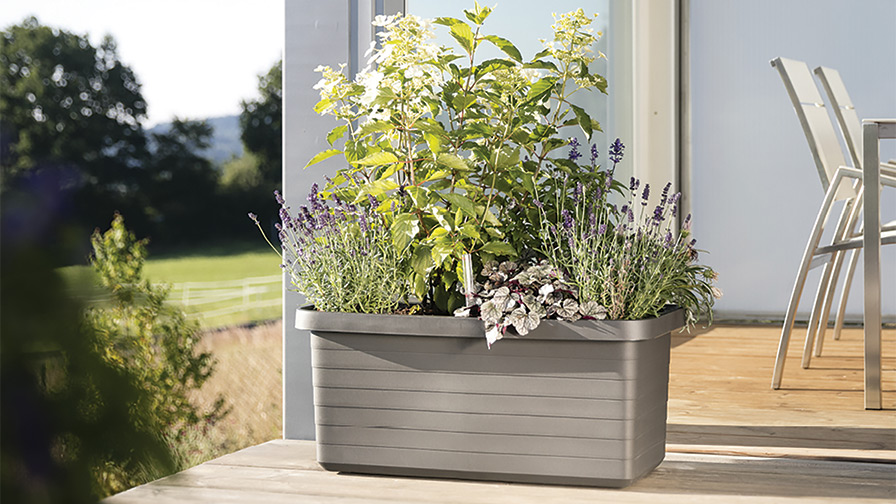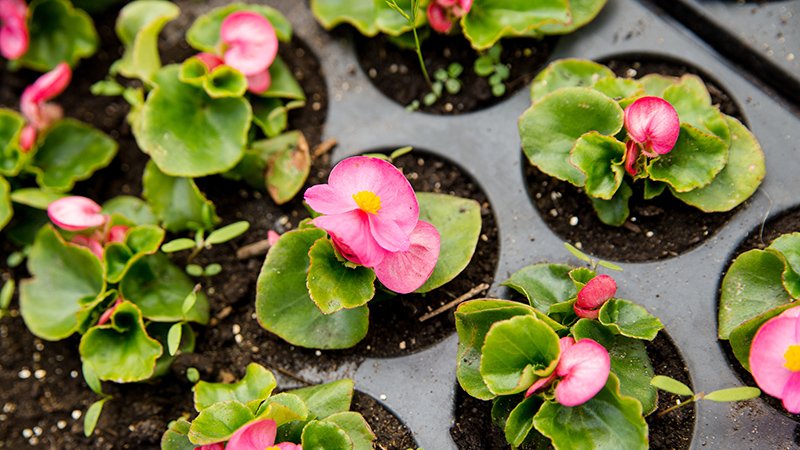How to Teach Your Garden Center Customers to Water On Their Own Terms

Self-watering pots help consumers properly regulate watering through the hot summer months. Photo of Berberis Anthracite pot by Urbalive USA.
While today’s consumers enjoy the convenience of container gardening, their lack of knowledge about how to water plants properly in containers with limited soil volume can stand in the way of their success. Customers at Malmborg’s Garden Center & Greenhouse, with two locations in Minnesota, are among those who enjoy ready-made, low-maintenance patio pots, windowboxes, and hanging baskets packed with annuals or vegetables.
When Malmborg’s started selling standard vegetable items in 14-inch patio pots, with either plant stakes or cages included, as a complete-package product to take home and set on the patio, customers loved the idea but didn’t relish the thought of watering.
“Many people don’t understand how much to water and are frustrated about the demand to water every day or even twice daily during the heat of summer,” says Troy Lucht, President at Malmborg’s. “Even large pots require a lot of water to sustain all the plant growth and to have success in vegetables with fruit set.”
Malmborg’s staff struggled to figure out the best way to educate its customers on how to water containers properly and fit watering into their busy lives. While attending the IPM show in Essen, Germany in 2017, Lucht came across the UrbaliveUSA products from Plastia (factory in the Czech Republic). UrbaliveUSA containers store water without having the soil be in the water, and the design takes into account consumer questions about how much, when, and how often to water. Lucht says he knew the products were just what he had been looking for to offer to Malmborg’s customers, and the response to them has been exceptional.
It’s important for grower-retailers to take the time to understand how their products/plants are actually being used and taken care of by their customers, Lucht says, so they can match their offerings to their customers’ lifestyles.
“It’s easy to say how a product or plant should be managed, but the reality is often different than we would predict,” Lucht says. “Our personal time is now so important, so valuable, that if we can offer solutions that provide time and reduce the time-demand of caring for customers’ plants (plants they want to grow and enjoy), then often the cost of the product is not a primary consideration.”









